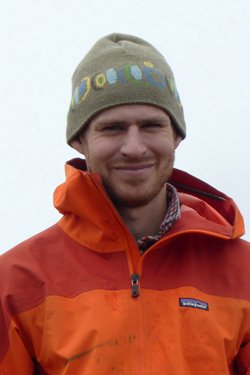Nicolás Young
2015 Regional Award Winner — Post-Doc

Current Position:
Lamont-Doherty Postdoctoral Fellow, Lamont Doherty Earth Observatory
Institution:
Columbia University
Discipline:
Geology & Geophysics

Current Position:
Lamont-Doherty Postdoctoral Fellow, Lamont Doherty Earth Observatory
Institution:
Columbia University
Discipline:
Geology & Geophysics
Recognized for: Cross-disciplinary studies of changes in polar ice sheets and mountain glaciers in response to climate change
Areas of Research Interest and Expertise: Climate Change, Paleoclimate, Quaternary Geology, Ice Sheets
Biography:
PhD, Geology, University of Buffalo, NY
BA, Geology, The College of Wooster, OH
Nicolás Young’s research asks how have ice sheets and mountain glaciers changed through time and what are the driving mechanisms behind these changes. Young relies on a blend of careful field observations and geochemical approaches to reconstruct the past behavior of ice sheets and glaciers and, in turn, use these reconstructions to inform predictions of future change.
Dr. Young’s primary research projects focus on the behavior of the Greenland Ice Sheet over the past 10,000 years. Dr. Young and colleagues have determined that parts of the Greenland Ice Sheet are capable of responding rapidly to abrupt and short-lived climate perturbations, implying that a long-term climate trend is not needed to elicit a significant ice-sheet response. Moreover, Young and colleagues are currently working on a new technique to better determine the size of the Greenland Ice Sheet ~5,000 years ago when the Arctic was slightly warmer than today. In light of continued warming through the 21st century towards temperatures similar to those achieved ~5,000 years ago, these results will have clear relevance for predicting the future dimensions of the Greenland Ice Sheet. Dr. Young is the recent recipient of two grants from the U.S. National Science Foundation’s Arctic Natural Sciences and Arctic System Sciences programs.
“It is going to take an enormous effort involving scientists with different specialties to accurately predict the magnitude of future sea-level rise. My goal is to contribute to this endeavor by looking carefully in the geologic record for clues that will help us with this prediction.”
Key publications: